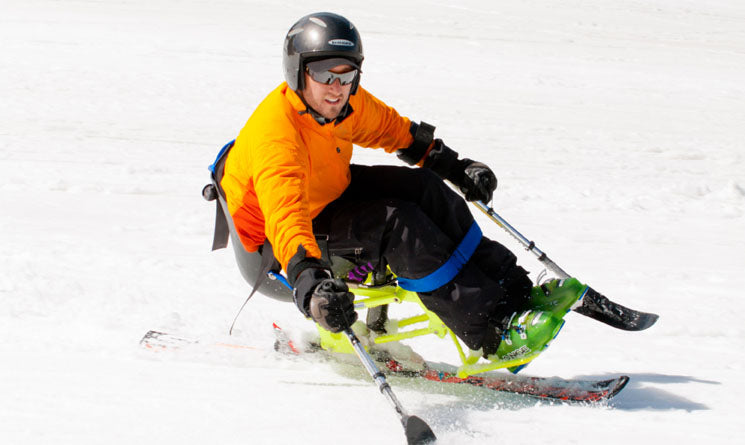
Adaptive Skiing and Snowboarding: How People with Disabilities Can Enjoy the Thrills of Winter Sports
Share
Winter sports such as skiing and snowboarding can offer unique experiences and thrills that cannot be found in other activities. While these sports may seem challenging or impossible for people with disabilities, adaptive equipment and techniques can allow them to participate and enjoy the slopes.
In this blog post, we will explore the types of disabilities that can participate, the available adaptive equipment and techniques, safety precautions to keep in mind, and the many benefits of skiing and snowboarding for people with disabilities.
Types of Disabilities:
Skiing and snowboarding can be adapted for people with various disabilities. Physical disabilities such as amputations, spinal cord injuries, and cerebral palsy can be accommodated using sit-skis, bi-skis, or mono-skis.
Visual impairments such as blindness or low vision can be adjusted through visual and auditory aids. Cognitive disabilities such as Down syndrome or autism can also be accommodated through adaptive equipment and techniques.
Adaptive Equipment:
Adaptive equipment is available for individuals with disabilities to make skiing and snowboarding possible. Sit-skis are designed for individuals with lower limb impairments. In contrast, bi-ski and mono-ski are intended for individuals with mobility impairments.
Outriggers are available for individuals with upper limb impairments. At the same time, visual and auditory aids are available for individuals with sensory impairments.
Adaptive Techniques:
Adaptive techniques are available to help individuals with disabilities enjoy skiing and snowboarding. Skiers or snowboarders can use a buddy or instructor for support and guidance and a rope or guide bar for balance.
Hand signals or verbal cues can also be used for communication, and equipment or techniques can be modified to suit individual needs.
Safety Precautions:
Safety is always important when skiing or snowboarding and is even more critical for individuals with disabilities. Proper equipment and gear should be used, and the rules and guidelines of the ski resort should be followed. Beginners should start with easy slopes and gradually progress to more challenging ones. Snow and weather conditions should also be taken into account.
Benefits of Skiing and Snowboarding for People with Disabilities:
Skiing and snowboarding can offer many benefits for people with disabilities. Physical activity and exercise are essential for overall health and well-being, and skiing and snowboarding can provide a fun way to stay active. Independence and confidence can be developed, as well as social interaction and inclusion.
Finally, enjoying the outdoors and nature can be experienced, which can be incredibly therapeutic for individuals with disabilities.
Conclusion:
In conclusion, skiing and snowboarding can be adapted for people with disabilities through adaptive equipment and techniques. Individuals with various disabilities can participate in these sports and enjoy their many benefits.
Safety precautions should always be considered, and beginners should start with easy slopes and progress gradually. With proper guidance and equipment, skiing and snowboarding can be a safe and enjoyable experience for everyone.